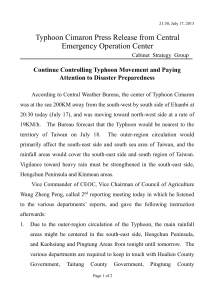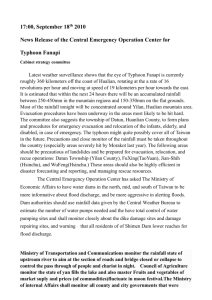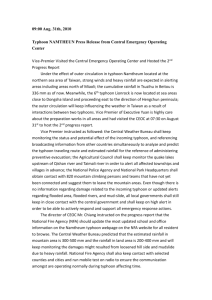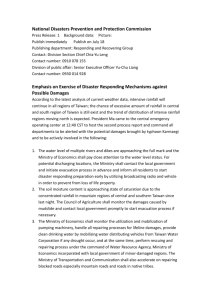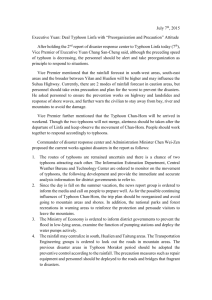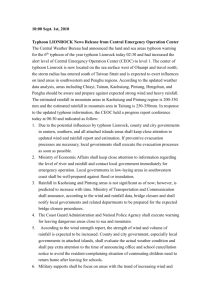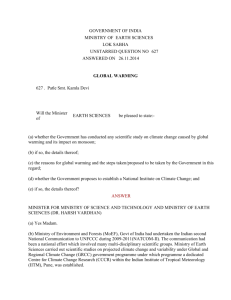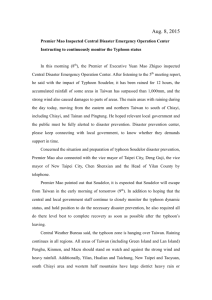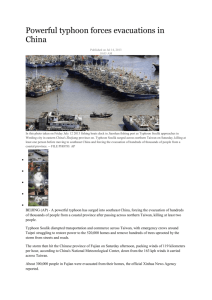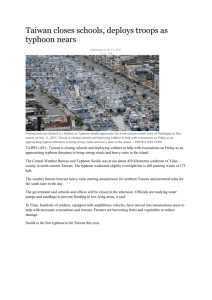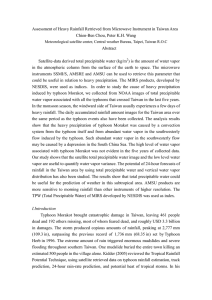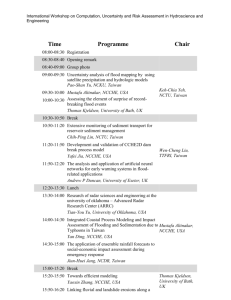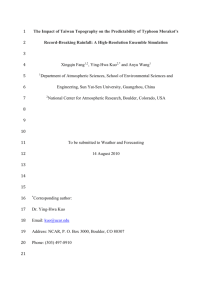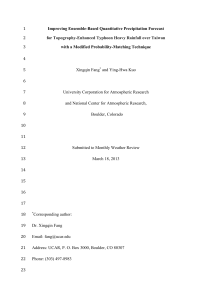Is Record-Breaking Increase in Taiwan Typhoon Rainfall Related to
advertisement
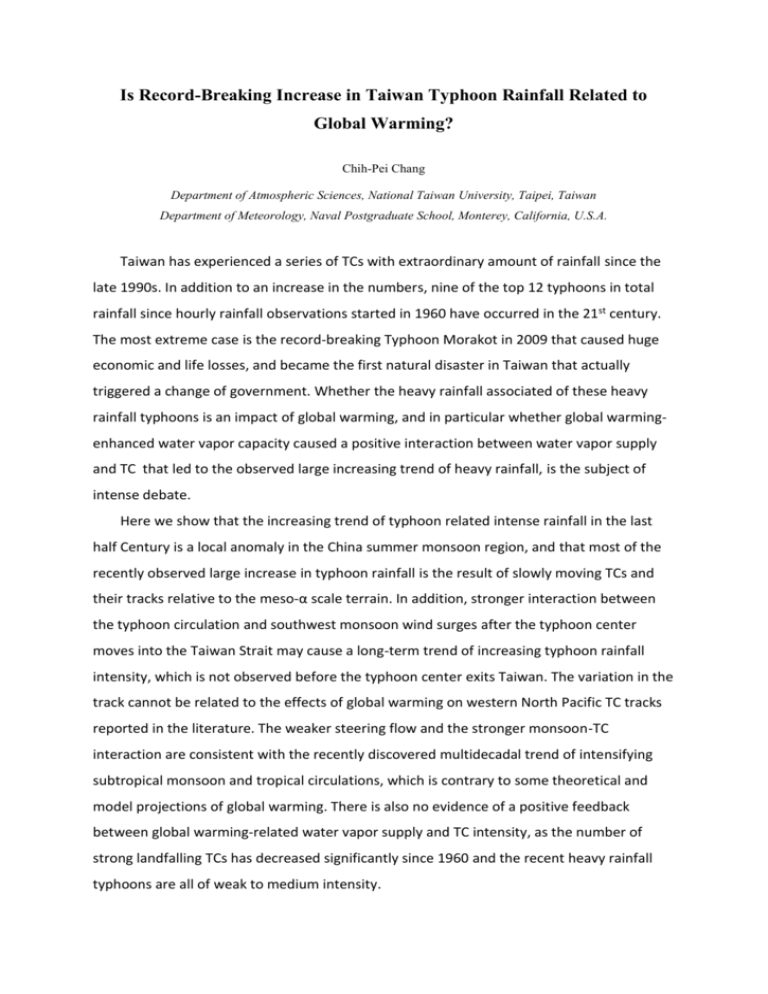
Is Record-Breaking Increase in Taiwan Typhoon Rainfall Related to Global Warming? Chih-Pei Chang Department of Atmospheric Sciences, National Taiwan University, Taipei, Taiwan Department of Meteorology, Naval Postgraduate School, Monterey, California, U.S.A. Taiwan has experienced a series of TCs with extraordinary amount of rainfall since the late 1990s. In addition to an increase in the numbers, nine of the top 12 typhoons in total rainfall since hourly rainfall observations started in 1960 have occurred in the 21st century. The most extreme case is the record-breaking Typhoon Morakot in 2009 that caused huge economic and life losses, and became the first natural disaster in Taiwan that actually triggered a change of government. Whether the heavy rainfall associated of these heavy rainfall typhoons is an impact of global warming, and in particular whether global warmingenhanced water vapor capacity caused a positive interaction between water vapor supply and TC that led to the observed large increasing trend of heavy rainfall, is the subject of intense debate. Here we show that the increasing trend of typhoon related intense rainfall in the last half Century is a local anomaly in the China summer monsoon region, and that most of the recently observed large increase in typhoon rainfall is the result of slowly moving TCs and their tracks relative to the meso-α scale terrain. In addition, stronger interaction between the typhoon circulation and southwest monsoon wind surges after the typhoon center moves into the Taiwan Strait may cause a long-term trend of increasing typhoon rainfall intensity, which is not observed before the typhoon center exits Taiwan. The variation in the track cannot be related to the effects of global warming on western North Pacific TC tracks reported in the literature. The weaker steering flow and the stronger monsoon-TC interaction are consistent with the recently discovered multidecadal trend of intensifying subtropical monsoon and tropical circulations, which is contrary to some theoretical and model projections of global warming. There is also no evidence of a positive feedback between global warming-related water vapor supply and TC intensity, as the number of strong landfalling TCs has decreased significantly since 1960 and the recent heavy rainfall typhoons are all of weak to medium intensity.

